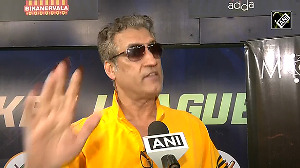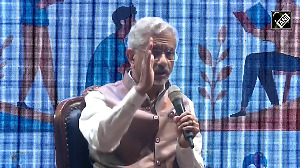Never short of topics in the world's second most populous country, the news industry in India is getting ready to inundate a growing television audience.
Starting this month, four new 24-hour news channels will compete with three existing news networks with live telecasts, talking heads, studio shows that involve audiences and celebrities, and community-focused programming.
For a nation that less than a decade ago could only watch monotonous news bulletins on state-run TV, the new channels are a bonanza for India's 45 million cable subscribers.
Media analysts say that ever since TV brought pictures of Indian troops fighting Pakistani invaders in northern Kashmir in 1999 into living rooms, the demand for 24-hour news has boomed.
Research firm TAM Media Research says India's TV news consumption has nearly tripled since 2000.
The hunger has translated into soaring ratings for the existing channels: News Corp's Star News, the Hindi language Zee News, a unit of media group Zee Telefilms, and Aaj Tak, a unit of the India Today media group.
Their coverage of a devastating earthquake, a shoot-out between militants and security forces outside parliament, Hindu-Muslim clashes and a military confrontation with Pakistan has only whetted the viewer's appetite.
"News as a category has an immense potential to grow," G Krishnan, chief executive of Aaj Tak's parent firm, TV Today, told Reuters. "Therefore, with the arrival of new players, we believe that the market for news viewership will expand."
Although news viewing accounted for only two per cent of total TV viewing, news channels had an 11.3 per cent share of television advertising revenues and the highest rate of investment returns at 5.7 per cent, TAM said.
Advertising revenues of news channels are expected to rise to Rs 5 billion by the end of 2005 from nearly Rs 3 billion in 2002. "These are very exciting times to be in television news," said a senior editor at NDTV, a local TV news pioneer which produced content for Star until last month and launched a Hindi and an English news channel this week.
"Which other country can offer such an astounding variety of stories with so much colour and drama so regularly?" he asked.
The explosion of TV news is exemplified by Aaj Tak's phenomenal success.
Aaj Tak became a hit and broke even in less than a year with a formula that combined low investment, breaking news, live telecasts and aggressive journalism in a very local Hindi accent.
It now hopes to repeat that feat with its new English channel, Headlines Today.
Some media analysts, however, are not so sure if the demand for news is as huge as the channels make it out to be.
"It doesn't make sense to me to have so many channels because all of them have the same stuff," said Sevanti Ninan, an independent media critic.
"We seem to be living in spectacularly bad times, and all the channels seem to be banking on the fact that things will only get worse," she told Reuters, adding the channels could end up sensationalising events to make them saleable.
Advertising industry officials say the large number of channels gives them more options, but they do not rule out a shakeout.
"Only channels that break news faster and get their content-mix right will survive," said R Chandrasekhar, Delhi-based associate media director at advertising firm Grey Worldwide. "Viewership will increase only when there are dramatic events or elections. Otherwise I don't think it will grow dramatically."





 © 2025
© 2025